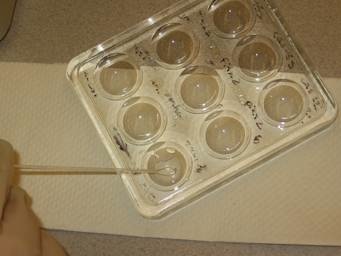
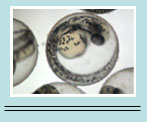
Home
Common Techniques
Classroom Experiments
Virtual Experiments
Tutorials
Games
Glossary
Links
Publishing
Opportunities
About This Site
Contact Us
ZFIN
Cite Us
How to use Anesthetics on Zebrafish
Once the zebrafish begin moving (at ~17 somite stage) it may be helpful to anesthetize them before observing them under the microscope.
Chemical safety: Do not splash the anesthetic around. It contains a nasty chemical, 3-aminobenzoic acid ethyl ester (MS-222), which is categorized as an irritant. Be careful, wear gloves, and wipe up any spills promptly and completely. If the anesthetic solution comes in contact with your skin or eyes, rinse with copious amounts of water, and inform the instructor.
Protocol:
1. You may want to dechorionate the embryos you want to observe. This is not absolutely necessary as long as what you want to see is not obscured by the chorion. Once the embryo is dechorionated, it is much more fragile, so be gentle. To dechorionate the embryo:
- Observe the embryos in a stereo microscope
- Grab the chorion with both left and right forceps placed very close together
- Make a small tear. DO NOT let the collapsing chorion touch the embryo.
- Make the hole in the chorion bigger, little by little until it is big enough to release the embryo.
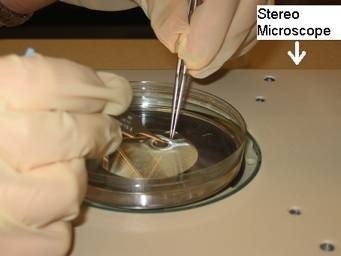
2. Pipette the embryo into a nine-well dish/a depression slide well containing fish water.
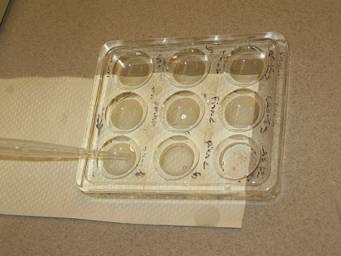
3. Use a pipette to transfer MS-222 or Tricaine drop-wise into wells. Anesthesia usually effective in less than a minute. It usually takes one or two drops to anesthetize the embryos, if there is not a lot of water in the well. Caution: Overdose of Tricaine can kill the embryo.
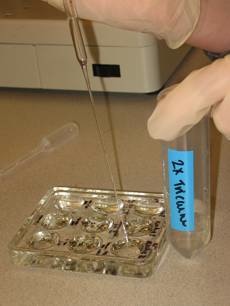
4. Gently move the embryo(s) to make sure they are no longer moving and that the anesthesia was successful.
.